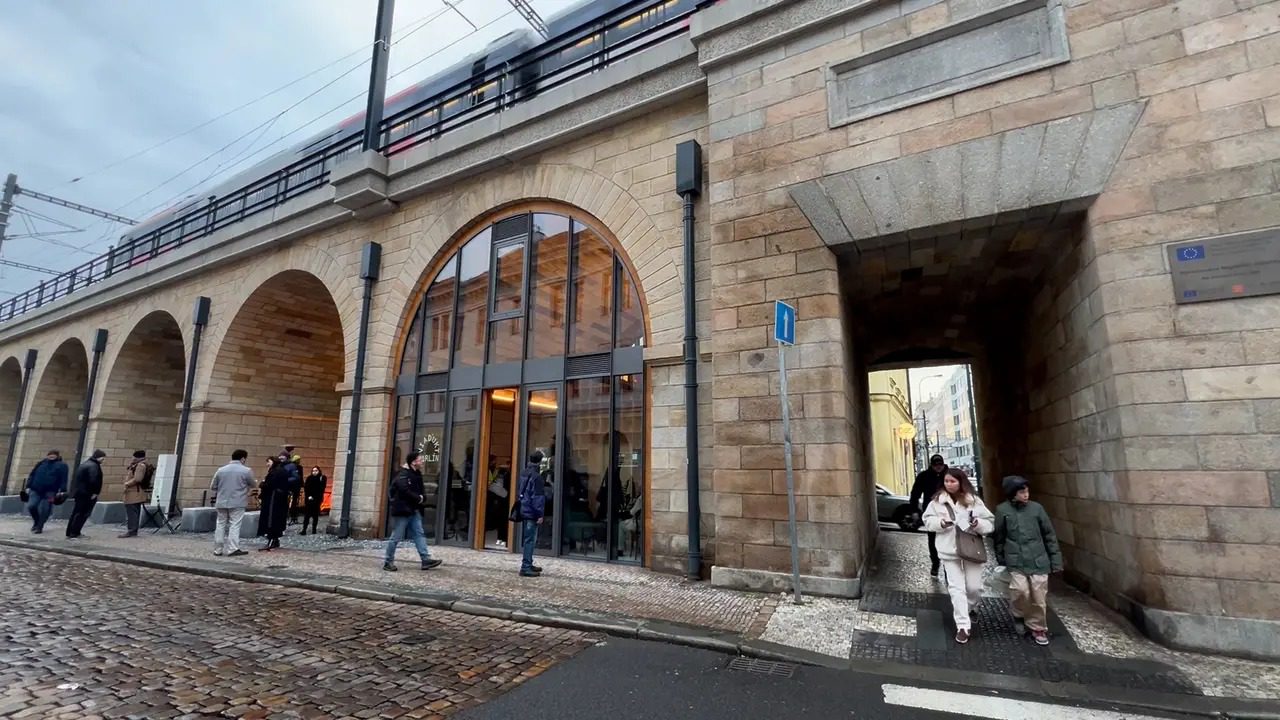A new cultural and social space has opened in Prague’s Karlín district, tucked within one of the arches of the historic Negrelli Viaduct. The first of its kind, the space is designed primarily for non-commercial events and will be tested for two years before any further decisions are made about its future. If the trial proves successful, the city plans to eventually enclose up to 40 arches along the viaduct, creating spaces for galleries, events, and potentially even commercial tenants.
The creation of this glass-enclosed area, which includes a wooden interior, was a significant investment for the city, costing approximately 10 million CZK. The technical side of the project, including the installation of the glass walls and the necessary utilities, was handled by the Technical Road Administration (TSK), while the interior design was managed by Trade Centre Praha (TCP), the city-owned company now overseeing the space.
“The construction was atypical for us,” said Barbora Lišková, spokesperson for TSK. “The glass wall, in particular, was a challenge, especially since we could not anchor anything into the stone of the viaduct due to its protected status. The structure of the glass wall is held in place by a precise metal frame.”
The space is designed to accommodate a range of activities, from exhibitions to small meetings and community events. It’s already equipped with furniture designed by architect Igor Kovačević and his studio. The city is offering the space for anyone interested in organizing an event, with reservations being made through an online calendar. “We are open to cooperation with anyone and will also curate the program ourselves to understand how the space can be best utilized,” said Prague councilor Adam Zábranský (Pirates).
Over the next two years, the impact of the glass installation on the viaduct’s structure will be monitored. This is a crucial step, as the viaduct is a protected historical monument. Researchers from the Klokner Institute and the Faculty of Civil Engineering at the Czech Technical University (CTU) are conducting the monitoring, focusing on how the changes might affect the structure’s temperature regulation and overall integrity. “We need to understand the impact of this installation, especially how the enclosed space will affect the viaduct’s natural cooling process,” explained Deputy Mayor Petr Hlaváček (STAN). The space will also serve as an information hub, helping people understand what the area can be used for and what it cannot accommodate.
Looking ahead, the city plans to enclose up to 40 arches of the viaduct. “We want to breathe life into these spaces. Currently, they’re just empty arches, but this area is rapidly growing in significance,” said Zábranský. The plan for the future includes a mix of commercial, cultural, and innovation-focused uses. Forty percent of the spaces would be rented commercially—ideal for cafes or shops—while another 40% would be designated for cultural purposes, such as galleries or community events. The remaining 20% could be reserved for short-term rentals aimed at young and innovative businesses.
The area surrounding the Negrelli Viaduct, already undergoing significant changes, is expected to continue its transformation in the coming years, particularly with the planned development of the nearby Karlín barracks and projects in the Florence area. “In the next 10 to 15 years, this area will evolve into a vibrant urban district with quality architecture and projects that benefit the city and the state,” Hlaváček noted.
The Negrelli Viaduct itself, completed in 1850, is Prague’s first railway bridge over the Vltava River and the second-oldest standing bridge in the city. A designated national landmark, the viaduct connects Masaryk Station to the Štvanice Island and the Bubny district. The installation of glass walls follows a comprehensive renovation of the viaduct, which took place between 2017 and 2020 at a cost of nearly two billion CZK.





